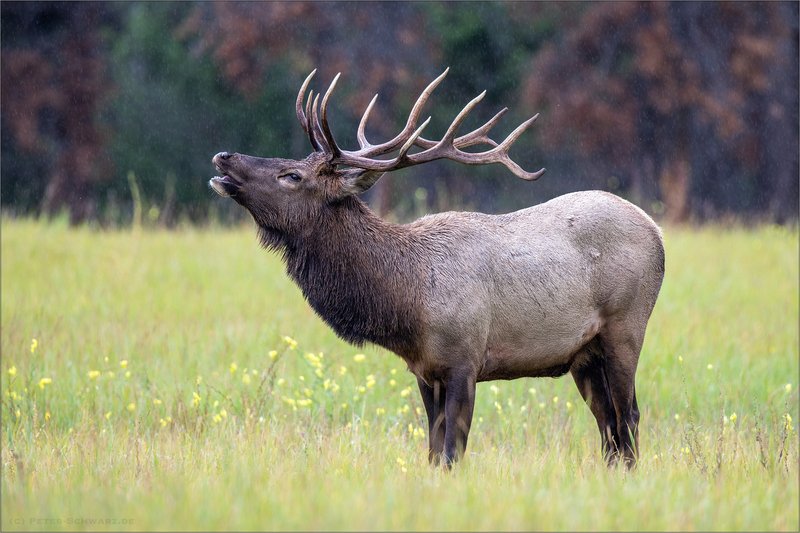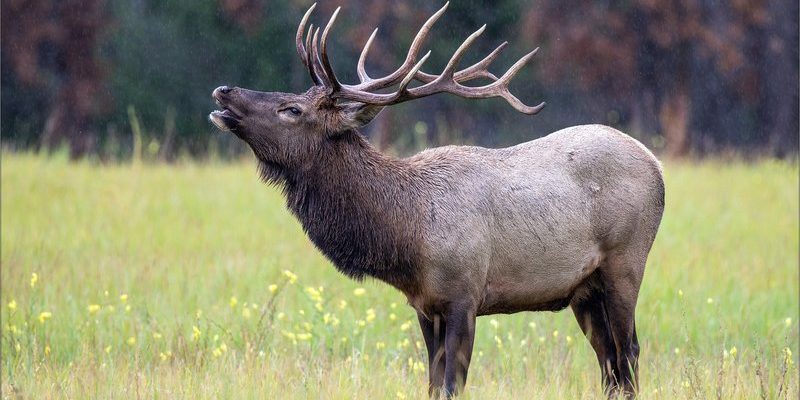
Let’s imagine you’re standing in a lush forest, the sun streaming through the trees, and you spot a group of wapiti grazing peacefully. It’s a picture of nature’s balance, right? But here’s the twist: behind this tranquil scene lies a story filled with challenges and efforts to protect these magnificent animals. So, while you might associate wapiti with abundant wilderness, the truth is, their future isn’t as secure as you might think.
Understanding Wapiti: A Brief Overview
Wapiti are large mammals belonging to the deer family, Cervidae. They are primarily found in North America and parts of East Asia. What makes them stand out? For starters, **male wapiti**, or bulls, can weigh up to 700 pounds and boast antlers that can span more than four feet. This impressive size is matched by their incredible adaptability to various habitats, ranging from forests to grasslands.
You might be wondering about their social behavior. Wapiti are known for forming herds, especially during breeding season, when males engage in fascinating vocal displays known as bugling. This is where they make loud calls to attract females and assert their dominance. It’s a bit like a nature show; these antics might seem amusing, but they’re crucial for their survival and reproduction.
The Conservation Status of Wapiti
In terms of conservation, the wapiti’s status varies by region. In the United States, the Rocky Mountain subspecies is listed as “Least Concern,” indicating a relatively stable population. However, their smaller populations in other areas, like the Eastern elk, have faced severe declines. The **Eastern elk** is often considered extinct, highlighting the need for ongoing vigilance in conservation efforts.
Here’s the thing: while the main populations may seem stable, local populations can be threatened by habitat loss, overhunting, and diseases. Consequently, conservationists are closely monitoring these dynamics to ensure that wapiti can continue to thrive in their natural habitats. It’s a delicate balance that requires a proactive approach.
Threats Facing Wapiti Populations
Despite their robust nature, wapiti aren’t out of the woods yet. One of the biggest threats they face is habitat destruction. Urban expansion, agriculture, and logging can lead to fragmented environments, making it harder for these creatures to find food and mates. Imagine trying to find a restaurant in a bustling city with half the roads blocked off—frustrating, right?
Another significant threat is **overhunting**. While hunting can be managed sustainably, overzealous practices can decimate local populations. Conservationists work hard to promote regulations that balance hunting and population health, ensuring that we can enjoy these animals without putting them at risk.
Disease also poses an increasing threat to wapiti. As they gather in groups, they can easily transmit illnesses, particularly when in close proximity to domestic livestock. The emergence of diseases like chronic wasting disease (CWD) is alarming and requires constant monitoring and research to protect both wild and domesticated animals.
Conservation Efforts for Wapiti
Conservation initiatives play a vital role in ensuring the survival of wapiti. National parks and wildlife reserves have become sanctuaries for these animals, providing protected habitats where they can roam freely without the pressures of human encroachment. Think of these parks as safe havens amidst a chaotic world—a place where wildlife can thrive.
Organizations dedicated to wildlife conservation are also actively involved in monitoring wapiti populations and their health. They conduct research, advocate for policy changes, and engage communities in awareness and education. This grassroots approach empowers local people to become stewards of their natural environment, fostering a sense of responsibility towards wildlife.
You might be surprised to learn that hunting regulations also contribute to conservation. Controlled hunting programs help manage wildlife populations, ensuring that no species becomes overpopulated while providing sustainable revenue for conservation efforts. It’s a win-win scenario—people can enjoy hunting, while wildlife benefits overall.
The Role of Habitat Restoration
Restoring habitats is another key strategy for wapiti conservation. This could mean replanting native vegetation, removing invasive species, or even creating wildlife corridors that connect fragmented areas. By improving their environment, we enhance the chances for wapiti to thrive, allowing them to adapt and flourish.
Consider a thriving garden: when you provide the right conditions—sunlight, water, and nutrients—plants will flourish and attract all sorts of wildlife. The same principle applies to wapiti. Restoration efforts create environments that encourage biodiversity, benefiting not just the wapiti but countless other species that share their ecosystem.
On a community level, people are getting involved in projects that restore habitats. Schools, local groups, and volunteers often come together for tree-planting events or clean-up campaigns. These actions not only help the environment but also create a greater awareness of wildlife conservation among the public.
How You Can Help Wapiti Conservation
Wondering how you can play a part in wapiti conservation? You don’t have to be a wildlife biologist to make a difference! Here are a few simple ways you can help:
- Educate Yourself and Others: Knowledge is power. Share information about wapiti and their conservation needs with friends and family.
- Support Conservation Organizations: Donations or volunteering time with groups that focus on wildlife preservation can significantly impact local efforts.
- Practice Responsible Outdoor Recreation: When hiking or camping, stick to designated trails and be mindful of wildlife. Respect their habitats to help reduce human impact.
- Advocate for Policies: Engage in conversations with local leaders about sustainable hunting practices and protection for natural habitats.
Every small action counts, and together we can create a brighter future for wapiti and countless other wildlife species.
The Future of Wapiti Conservation
Looking ahead, the future of wapiti conservation will depend on our collective efforts to address their ongoing challenges. As we become more aware of the importance of biodiversity, it’s essential to support initiatives that prioritize wildlife. It’s not just about saving one species; it’s about maintaining a healthy ecosystem.
We need to keep the conversation alive. By raising awareness and promoting conservation, we can help ensure that future generations experience the wonder of wapiti in their natural habitats. Just like that picturesque scene we imagined earlier, these animals deserve the chance to roam freely and thrive.
As you reflect on what you’ve learned about wapiti and their conservation status, remember that every action counts. Whether it’s educating others, getting involved locally, or simply appreciating wildlife more, you can help protect these amazing animals and the environments they call home. Together, we can make a difference—one step at a time.

